
Indigenous-led conservation plans in Manitoba have sparked backlash. There’s also a path forward
Locals in the small community of Arborg worry a new Indigenous-led protected area plan would...
This is part one of a two-part series about the opposition to wind energy in Kneehill County, Alta.
Get the inside scoop on The Narwhal’s environment and climate reporting by signing up for our free newsletter.
Ron and Karin Armstrong’s immense yard in the middle of the Alberta Prairies is not without a bit of whimsy. Metal sculptures crafted by Ron are scattered about the acreage, including an old tractor refashioned into a dinosaur named Harvestosaurus. Their house overlooks a private airstrip used by the local bible school, which offers aviation programs. The property is perched atop of one of the hills that give the surrounding county its name, offering an endless view of prairie from their front porch.
It’s the view that Ron talks about when he talks of his home, a place he and Karin moved to 24 years ago after farming and raising cattle in Youngstown, Alta., 150 kilometres away.
But that view could change. A renewable energy company wants to build turbines, big ones and lots of them, on the fields that stretch off into the distance, angering some in the community.
That anger has morphed into a group calling itself Wind Concerns Kneehill County, which has been busy fomenting opposition to new wind turbines. They’ve been gathering signatures for a petition, organizing meetings, speaking to the local council and trying to catch the ear of the provincial government.

In August, about a dozen people met with The Narwhal in the Armstrong’s garage to lay out their concerns, meandering from the verifiable to the conspiratorial — concerns that are a microcosm for a larger push against renewable energy projects in Alberta and beyond, and which echo the political and policy shifts of the provincial government.
Should rural Albertans bear the burden of industrial developments that feed the electricity needs of cities? Why should a turbine the size of a skyscraper ruin the view? What happens to the farmland, to the birds, to the turbine blades that can’t be recycled or the landowners anxious about everything from health concerns to property values? Does renewable energy even provide the energy we need? Is anyone taking their concerns seriously?
At the same time, society faces a pressing need to reduce pollution. Moving away from electricity produced by burning fossil fuels like coal and natural gas reduces carbon pollution that causes climate change, which exacerbates drought, wildfires, flooding and more. Renewable energy sources also produce less air and water pollution than burning fossil fuels.

In some ways, the debate around renewable energy is an extension of familiar battles around industrial development, property rights and the balance between individuals and the greater good. But on another level, the debate is hopelessly entangled in the divisive politics of the climate crisis era and economic transition — as well as the swirl of misinformation that too often defines it.
There are big questions at the heart of the debate, and even bigger implications — political, economic, social and environmental — if we get it wrong. Getting it right requires understanding what it all means on a smaller scale: a province, a county, a town, an acreage, a garage overlooking the fields, pumpjacks and farms of Alberta.
For Kelly Tainsh, the organizing force who brought everyone together on the Armstrong property, it’s not a philosophical debate, it’s personal — and so are the potential impacts.
“There aren’t very many nights now that I don’t wake up in the middle of night, and the first thing on my mind is this,” she says.

Kneehill County is a little over an hour’s drive northeast of Calgary. It’s home to the World Famous Gopher Hole Museum on its west side, while its eastern edge follows the scar-like curve of the Red Deer River and the Alberta badlands.
Its central town, Three Hills, is home to a bible college and a shop-lined main street that goes quiet at night. North of town, there’s an old wind farm that was commissioned in 2010, but Lone Pine, the new project proposed by a Toronto-based company called Capstone Infrastructure east of town, will have significantly bigger turbines — as many as 60, with posts as high as a 36-storey building.
It’s also facing outsized opposition.
People have always been prone to oppose big changes in their backyards and communities. There have been uprisings against everything from housing developments to nuclear waste facilities to paved roads.

In recent years in Kneehill County, vehement opposition has flared up against a proposed landfill, a 171-hectare racetrack development and the old wind project north of town. Whether it’s noises or smells or concerns about farmland or sensitive ecosystems, many Kneehill residents have been vocal in the past.
So when Lone Pine was proposed in Kneehill County, residents again sprung into action. Tainsh says they took lessons from another citizen group called Riplinger Wind Concerned Citizens, which opposed a project on the doorstep of Waterton Lakes National Park in southern Alberta. That project was ultimately cancelled following provincial regulatory changes.
“That’s the only reason that we have gotten to the point where we are now,” Tainsh says. “There’s people fighting all over this province, not just us.”
In late April, as many were dealing with calving season and seeding their fields, hundreds filled the community hall in Three Hills to hear a presentation by Wind Concerns Kneehill County. Scattered around the room were volunteers with petitions to sign and posters showing the project location. As the crowd filtered in, a projector screen near the front cycled through memes: “Green lies are still lies,” read one. “Stop the greenwashing and stop the spin,” read another.
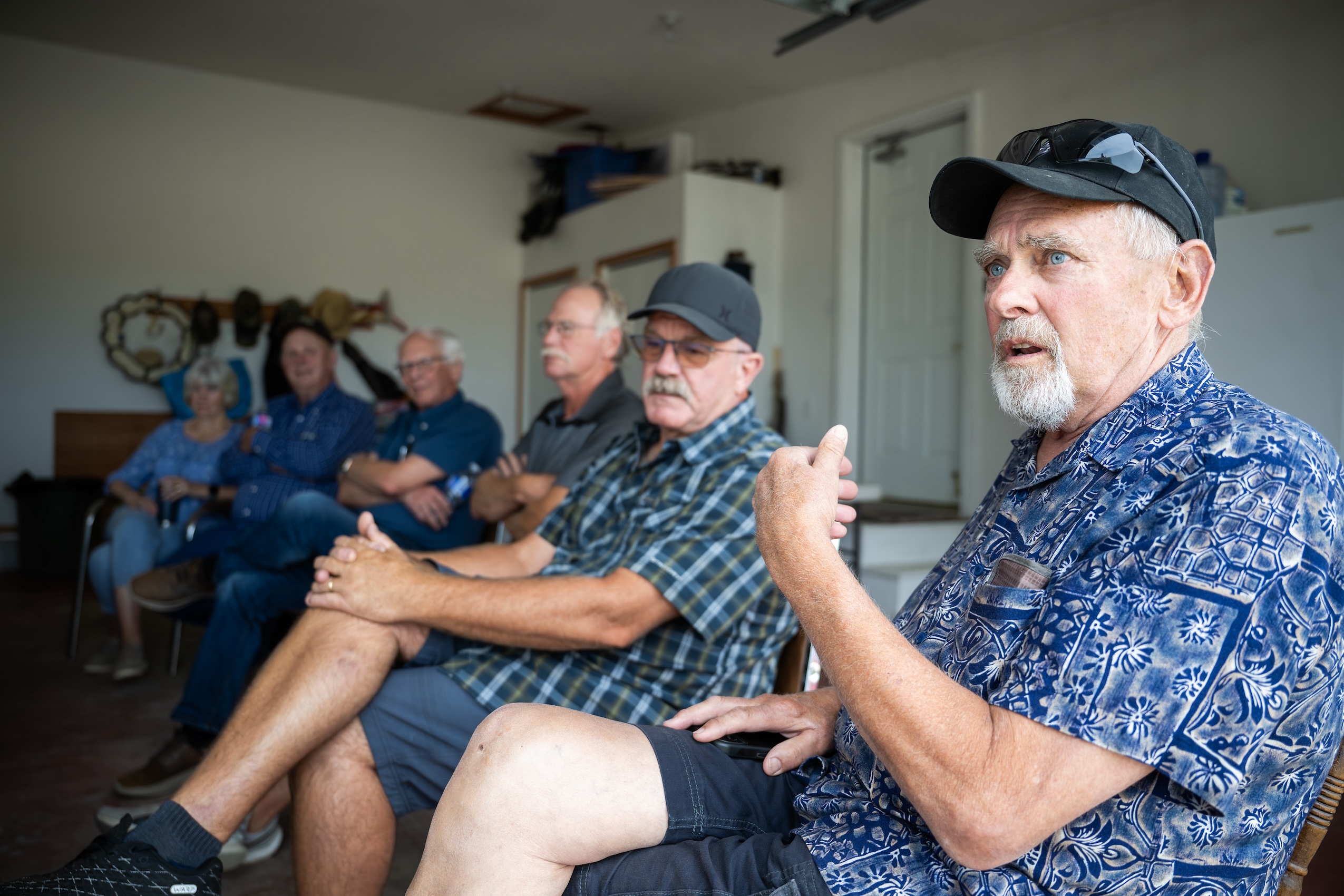
Midway through the meeting, the crowd was asked how many in the room were opposed to the wind project. Every hand in the room shot up.
At this point, the project is but an apple in the company’s eye. Capstone hasn’t formally applied to the regulator for approval of the project and it recently announced that it was pausing the development to get more regulatory certainty in a province where the rules are changing fast. The opponents won’t have a chance to formally voice their concerns until that process begins, which the company says could be delayed by two years.
Even when it happens, the approval process is designed to look at the greater needs of the province — not just the local context. A primary concern for those living in the area is the size of the turbines and what that means for the views that include a fringe of the Rocky Mountains, almost 200 kilometres west of the community.
“These things can’t help but affect people for miles, and that’s the main big issue,” Tainsh says.

The Armstrongs will face three turbines about the size of the Calgary Tower out their windows, if current plans hold. Ron might also have to close his airstrip, which is sometimes used by the bible college. Norm Tainsh, a lawyer in Three Hills and a relative of Kelly’s, says he lives farthest east of the project and will gaze out at all 50 or 60 turbines if he looks west.
While sitelines and viewscapes are a central argument against the Lone Pine project, as well as a central plank in the provincial government’s push against renewable energy, it’s far from the only issue raised by opponents. Corina Cormos moved to the area about a year ago to find peace in the countryside and get away from noise and industry in the Calgary area. The Armstrongs bought their land in 2000 after retiring from farming — “our kids didn’t want to farm,” he says.
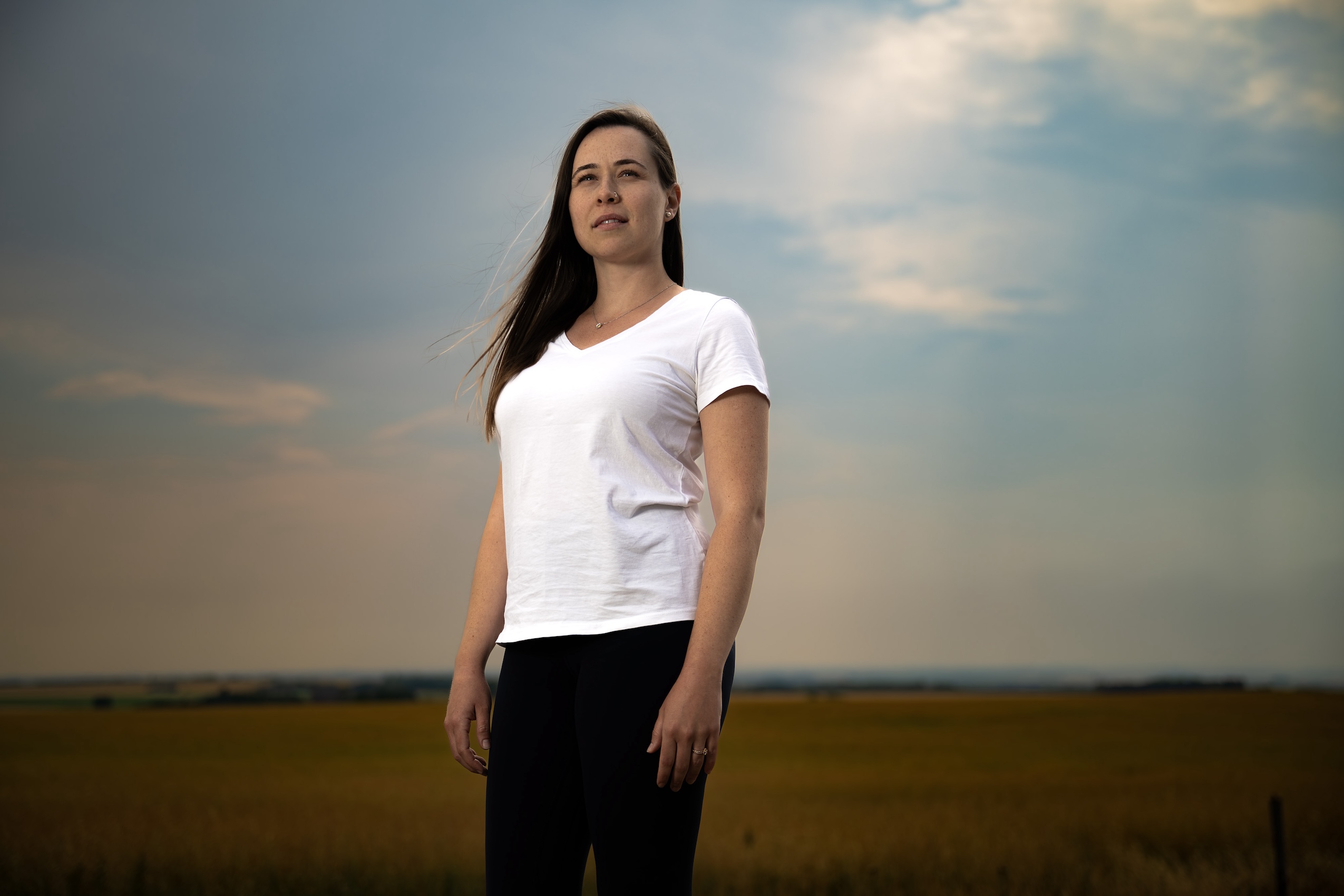
Others in the group have connections to their land stretching back generations and don’t want to see things change. Trish Tetz, who has a signed contract and regrets it, runs a fourth-generation cattle farm alongside her husband.
Many in the group believe renewables have hidden carbon footprints that make them unsustainable (despite multiple studies showing the footprint is magnitudes smaller than fossil fuels and is quickly offset by producing emission-free power). They say renewable power relies entirely on subsidies to be profitable — Alberta does not provide public funds for renewable generation, but there are federal tax credits for capital costs.
But there are also concerns about what happens when a project runs its course and needs to be decommissioned — a problem with oil and gas in rural Alberta that the group doesn’t want to see repeated with renewables.
If there’s no company left to clean things up, how do you dismantle a turbine or keep those flashing red lights going to warn off aircraft? And who will provide the landfill space for all those blades that can’t be recycled?
There’s also concern about noise, about the loss of farmland, about shadows flickering on the ground as the turbines spin and what would happen if a tower should fall or a blade break.
Megan Hunter, the senior manager of communications for Capstone Infrastructure, says her company is in it for the long haul if the project moves forward and plans to provide more information she hopes will mitigate concerns raised by residents. The company previously told The Narwhal it hoped to be able to provide more information by December, but now says that has been delayed because the project is on pause.
As an example, Hunter points to one of the company’s wind projects in Nova Scotia, which was recently decommissioned. She says no parts ended up in a landfill — the blades were set aside as extras for other projects.
But the Alberta government has taken note of landowners’ worries, like those in Kneehill County. It paused all new renewable energy projects for seven months in August 2023 and introduced more rigid regulations — including introducing buffer zones around “pristine viewscapes” — earlier this year. It’s a vocal supporter of more natural gas generation, rather than relying on wind and solar.
Tainsh says the government isn’t going far enough and worries they’re just “paying lip service,” but Hunter says the changes are making things challenging and the company is reconsidering its investments in Alberta.
“When there is that regulatory and investor uncertainty, it does lead to us thinking that maybe we want to assess other opportunities first.”
Hunter says the project is in flux at the moment due to the regulatory changes introduced by the province and the uncertainty that comes with them.
That lack of clarity creates an information vacuum that won’t be filled anytime soon, as Captsone grapples with its own set of regulatory unknowns.
There is plenty of playful ribbing offered at the Armstrong garage — at urbanites, at journalists, definitely at urban journalists. But the playfulness masks a real frustration with the rural/urban divide and concern over the impacts of place and home.

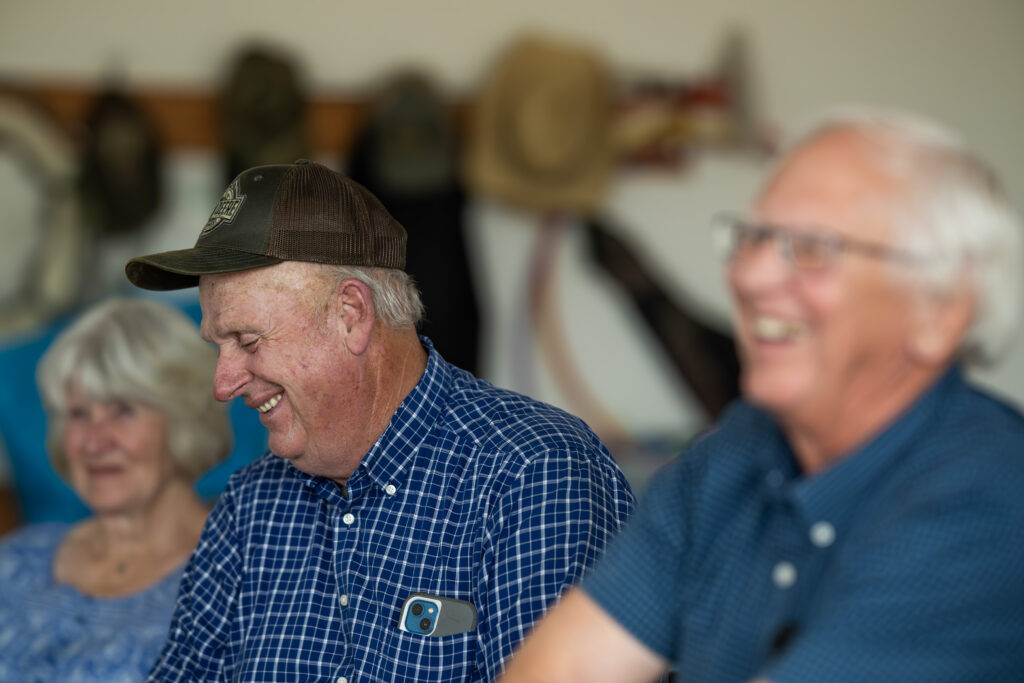
“Let’s take all the solar out of the farmland and put it onto big buildings all around the airport and everywhere else in Calgary,” John Hamm, a member of the wind concerns group and former county councillor, says.
“There’s all these big buildings with flat roofs, fill them with solar panels if that’s what you want, but keep it off productive ag land.”
None of the concerns raised by the residents of Kneehill County come as a surprise to John Parkins, a professor in the department of resource economics and environmental sociology at the University of Alberta. He’s been interviewing rural landowners in Alberta about wind power for years.
He’s also heard complaints that rural Albertans are being impacted to feed power to the cities and he’s heard plenty about how these projects change the places people call home.

“We know that people are deeply attached to places and to those landscapes and there is a resistance to change,” he says.
“There’s a sense in which people feel like, ‘Well, this is the landscape that I was raised in, this is the landscape that nurtures me, that provides a livelihood for me and my family,’ and any threat to that or change is difficult to accept.”
That resistance can be fuelled by the norms of the community and the experiences of those who live there, as well as the information pipelines that nourish it.
His research, however, has shown the issue is not necessarily tied to political ideology. Those norms are more adaptable and can shift if there is material benefit and experience with turbines that counters some of the fear of the unknown.
He says one of the ways we need to address it is through compensation or considering alternatives like community ownership and co-operatives.
“I don’t know if you can win the debate with information alone, but there is evidence that more local support for these projects comes with knowledge that they’re highly beneficial economically, and the technology is actually viable and valuable for our future energy needs,” Parkins says.

In Kneehill County, however, the lack of information is having a real impact. The residents worry about all of the unknowns and all of the potential consequences. That, in itself, is already taking a toll.
“These things haven’t even gone in yet, and everybody in our group is experiencing stress and anxiety,” Tainsh says.
As more wind projects are proposed across the world, it’s increasingly clear the kind of concerns in Kneehill County, or the kinds of impediments introduced by the province, are not unique.
One in-depth study in the U.S. tracked opposition to wind and solar projects across the country and found similarities with the concerns and tactics of the Kneehill opponents.
The study, a survey of renewable developers, paints a picture of rising local resistance, with top concerns including visual impacts, as well as property values, sound, community character and health impacts
An overwhelming majority of wind developers told the researchers that opposition has increased in the past five years, that companies are spending more to address it and they expect it to get worse.
Community opposition, according to the survey, was the leading cause of wind project cancellations.
Matthew B. Eisenson, a senior fellow at the Sabin Centre for Climate Change Law at Columbia Law School, wasn’t part of that survey, but he works regularly with supporters of renewable projects to challenge opposition.
He also co-authored the latest version of an ongoing study that looks at restrictions on renewable projects across the United States. It identified hundreds of restrictions, mostly at the local level, that are so severe that they could have the effect of blocking a renewable energy project.”
The study, published in June, lists 378 renewable projects across 47 states that have encountered what it deems significant opposition.
Moratoriums, like the one instituted in Alberta last year, are common at the local level, but not at the state level, Eisenson says.
“In most instances local law is the major impediment,” he says. “And a number of states, including New York, California, Illinois and Michigan, have all recently adopted permitting reforms to make it harder for local governments to block wind and solar projects.”
Those cancellations can have big impacts, particularly in Alberta where emissions have surged 52 per cent since 1990 and established the province as the biggest emitter in Canada. Its reliance on fossil fuels for electricity makes it one of the most polluting grids in the country. Pollution from burning natural gas can have significant health impacts on respiratory and cardiovascular systems, and can lead to cancer or early death.
The Pembina Institute estimates the changes in Alberta have effectively killed investment in new renewable energy projects, with no new proposals since the moratorium was lifted.
Just up the road from the bible college in Three Hills sits the administrative heart of the county, an unassuming newer building with an ample prairie-sized parking lot — and rows of solar panels on its roof.
It’s home to the local government, which pointedly does not have the power to approve or reject renewable projects, and whose local bylaws and land-use rules can be overridden by the Alberta Utilities Commission, the regulator of the electricity grid.
That is a thorn in the side of the wind opponents in the area who already bristle at the notion of turbines feeding the electricity needs of urbanites who don’t feel the impacts of development and developers who don’t respect the local bylaws. For them, this is an issue of fairness.
“All of these decisions are made on rural property by urban people who think this is great, wonderful green energy,” Hamm, the former councillor, says.
That puts Kenneth King, the reeve of Kneehill County, in a tight spot. He’s the face of the county council, he’s the representative of his district and he’s also responsible for bringing developments and dollars to the area. He represents those who oppose a wind farm, and those who support it.
“I’m a property owner. I have rights to determine how my property may or may not be developed, but in that conversation there also needs to be some consideration of immediate neighbours and how that impacts them,” King says.
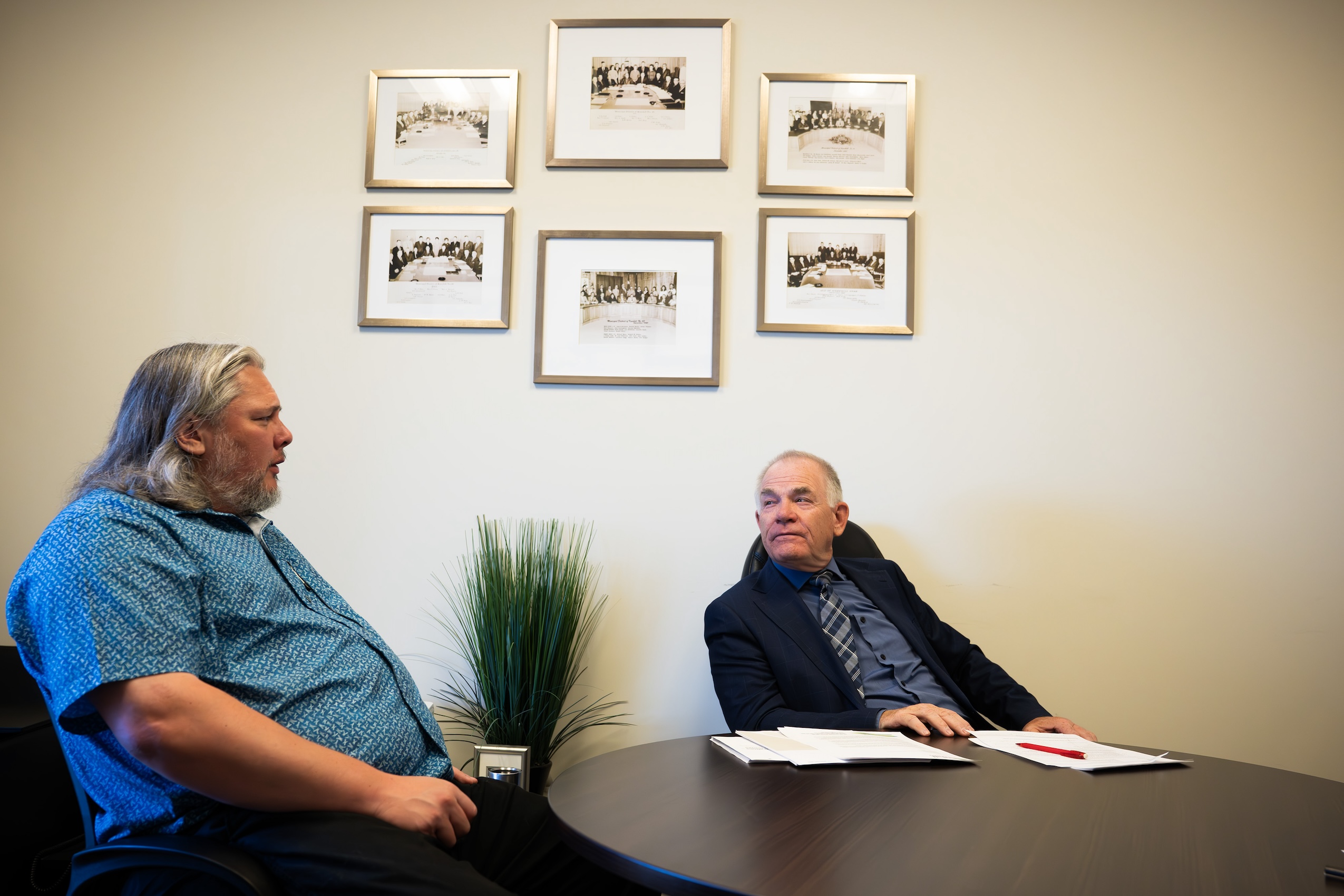
For King, there’s more to any development than the emotion it stirs. He says wind and solar developments have to be part of the discussion moving forward, particularly if revenues from oil and gas in the area start to decrease as anticipated. Agriculture alone won’t keep the county afloat.
But when it comes to large projects like Lone Pine, King and the council have no authority beyond appearing at regulator hearings and writing letters like everyone else. It’s one reason he says it’s important for residents to be involved in the hearing process. The county alone won’t have the same impact and it can’t always pick a side.
The provincial government doesn’t interfere in the regulatory approval process, but it does determine the regulations that guide the decision.
Recently, it directed the regulator to examine new rules that make it much more difficult to build projects like Lone Pine, and it wants to ensure local governments can be involved in that process.
King doesn’t want the authority to approve these kinds of projects. He says he understands why there are provincial bodies like the regulator to make those decisions for the greater good, but he’d like the regulator, and other bodies like it, to make decisions based on local land-use bylaws and development directions.
“What we’re trying to do at this point in time, through the conversation that we’re having — rural municipalities with the province — is to say we don’t want that complete authority back, but we do want a place at the table,” King says. “And when we’re at the table, we do want our voice to be respected.”
Connection to the place you call home can be powerful, a place of memories and dreams of the future. A drink on the porch looking out over fields of wheat, a visit from friends and family, reading in the living room.
It’s why developments are contentious if they change the character and feel of home.

The Armstrong’s have physically etched that sense of home into the boulders that form a rock garden steps from their front door — carved names of grandchildren and departed loved ones.
In the case of Lone Pine and other industrial wind farms, it’s impossible to ignore the visual impacts of large towers dotting a flat wide landscape. The place will change.
That change instills a generational anxiety in opponents who want children to inherit land as open as it is now and without the impacts — real or imagined — that could come with the turbines.
“I worry about that with my little girl,” Tetz, the rancher with a contract, says. “She’s 16 months old and those things, if they last 30 years, they’re still gonna be there well into her adulthood. Is she going to want to take over the farm if those things are hanging over us? Literally.”
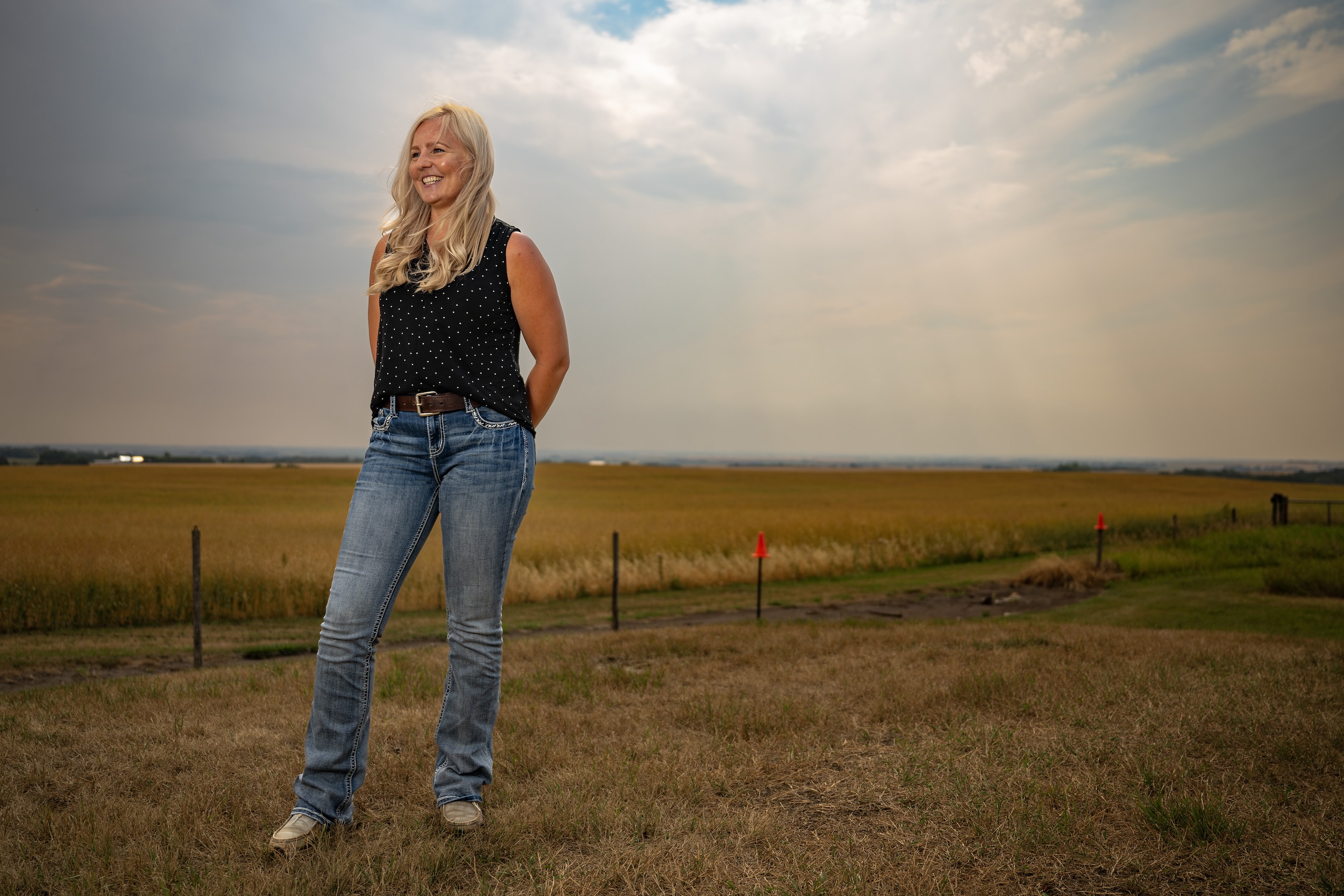
But those generational concerns clash with others — the ability to keep the family farm as costs increase and revenues do not and the potential for wind revenues to help keep it afloat, plus the real concerns over escalating climate change and its impacts both now and on the next generations.
Local concerns, and local government, ultimately have no impact on the decisions, Tainsh says. She resents how wind projects are often promoted as being in the public interest.
“Why do the populations that don’t have to deal with it get to override what is intimately impacting all of us?” she says.
Get the inside scoop on The Narwhal’s environment and climate reporting by signing up for our free newsletter. On March 17, federal Conservative Leader Pierre Poilievre...
Continue reading
Locals in the small community of Arborg worry a new Indigenous-led protected area plan would...

Conservative Leader Pierre Poilievre says he’ll fast-track approvals and scrap key rules that protect the...

One LNG project alone is requesting more than half the amount of electricity B.C.’s Site...
